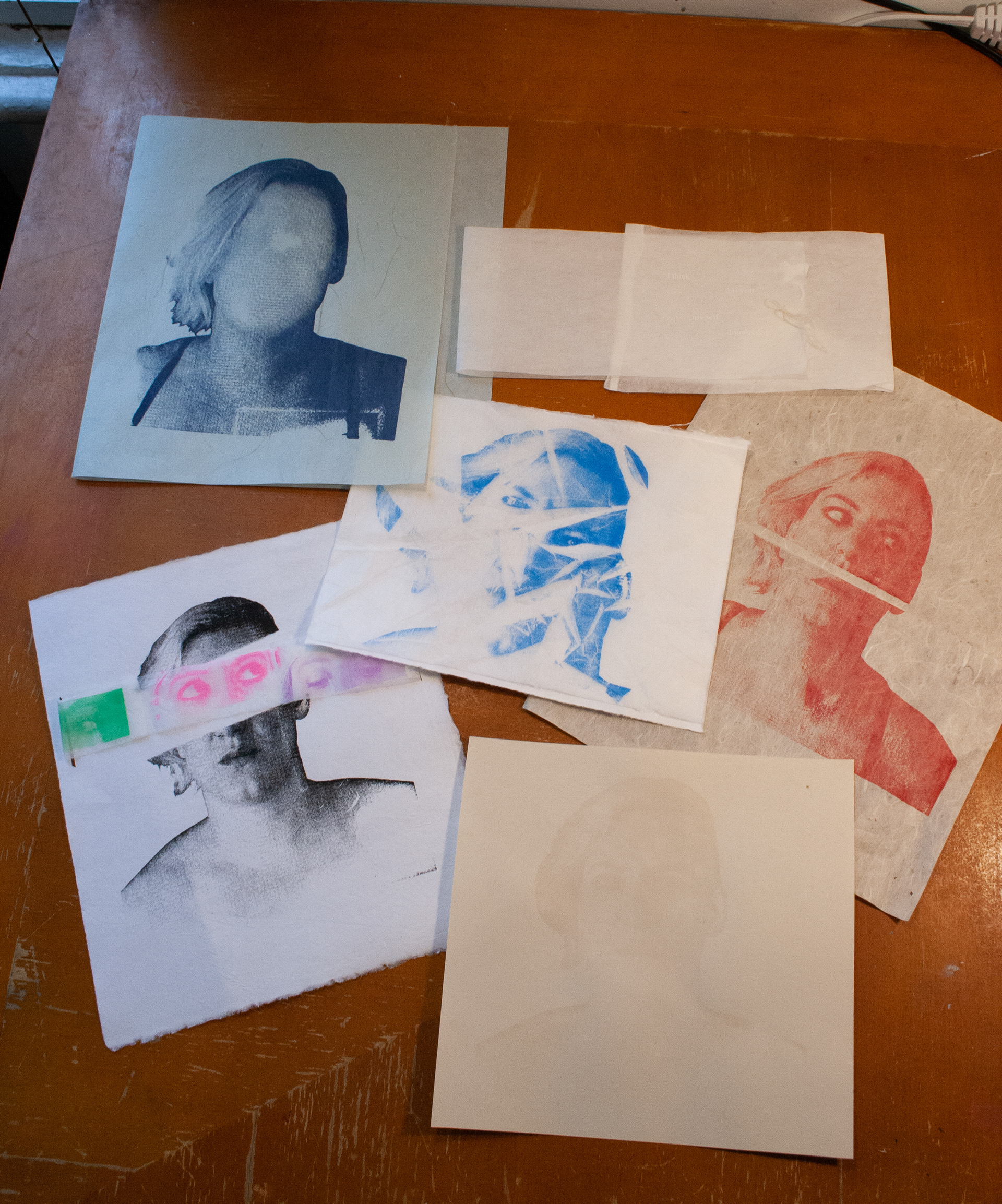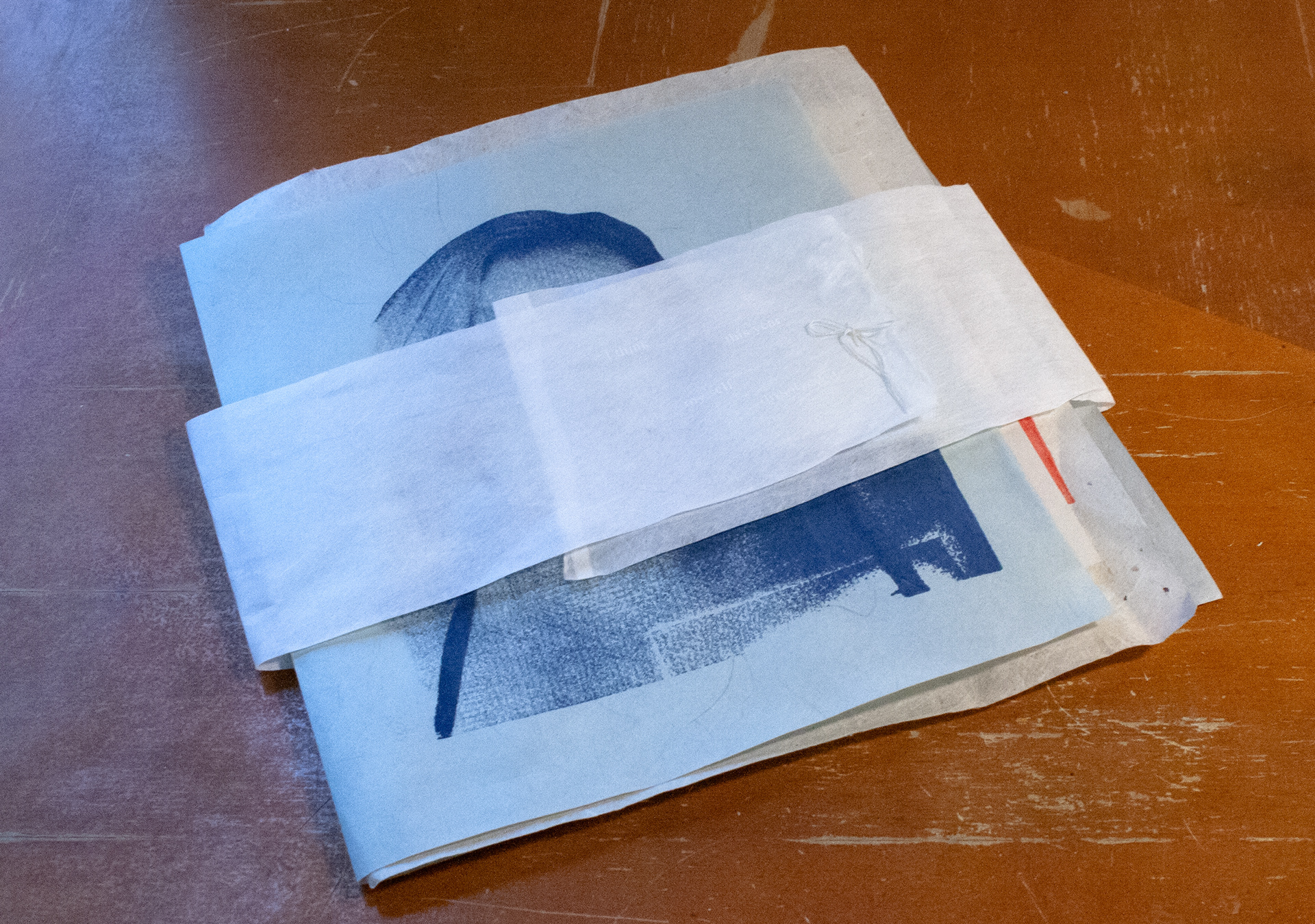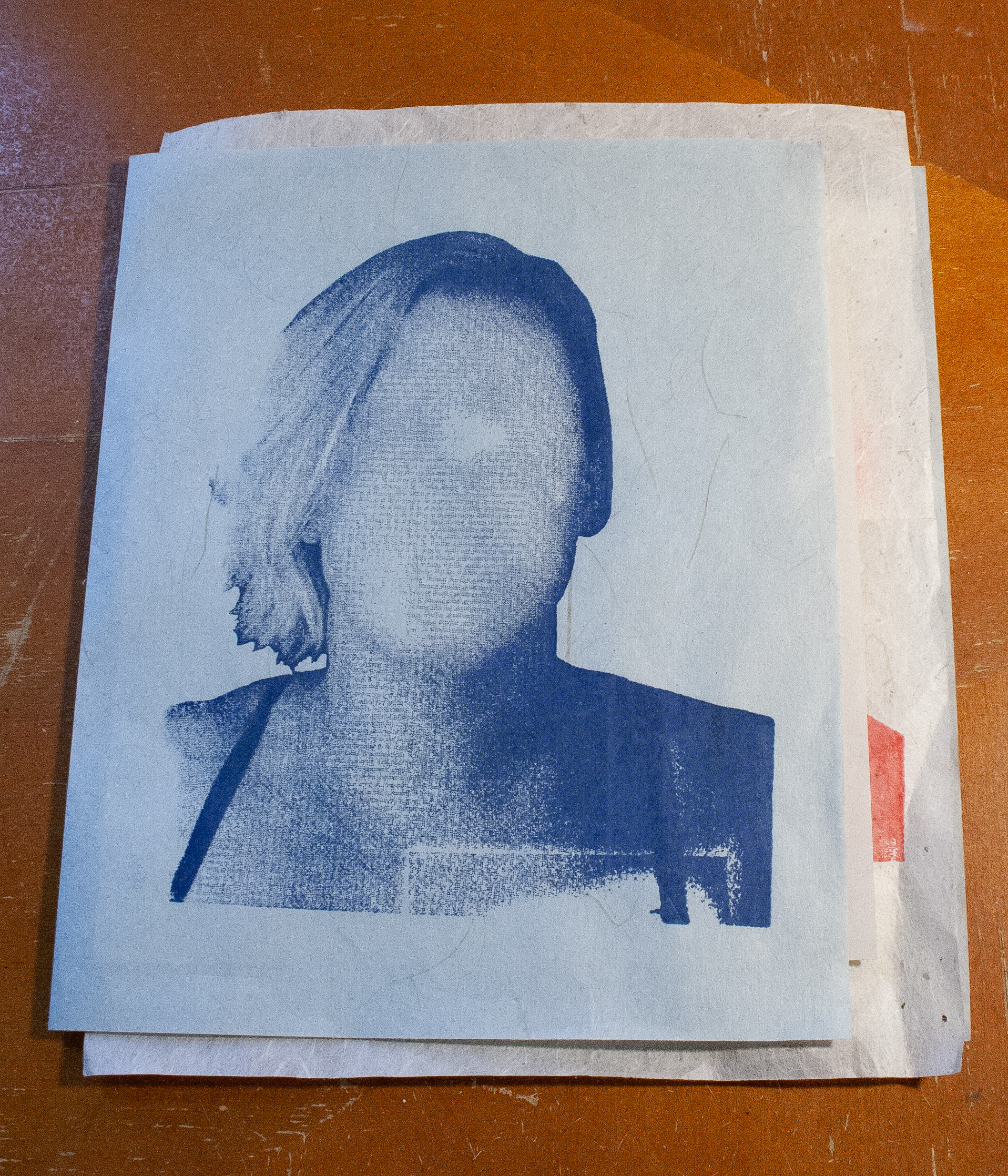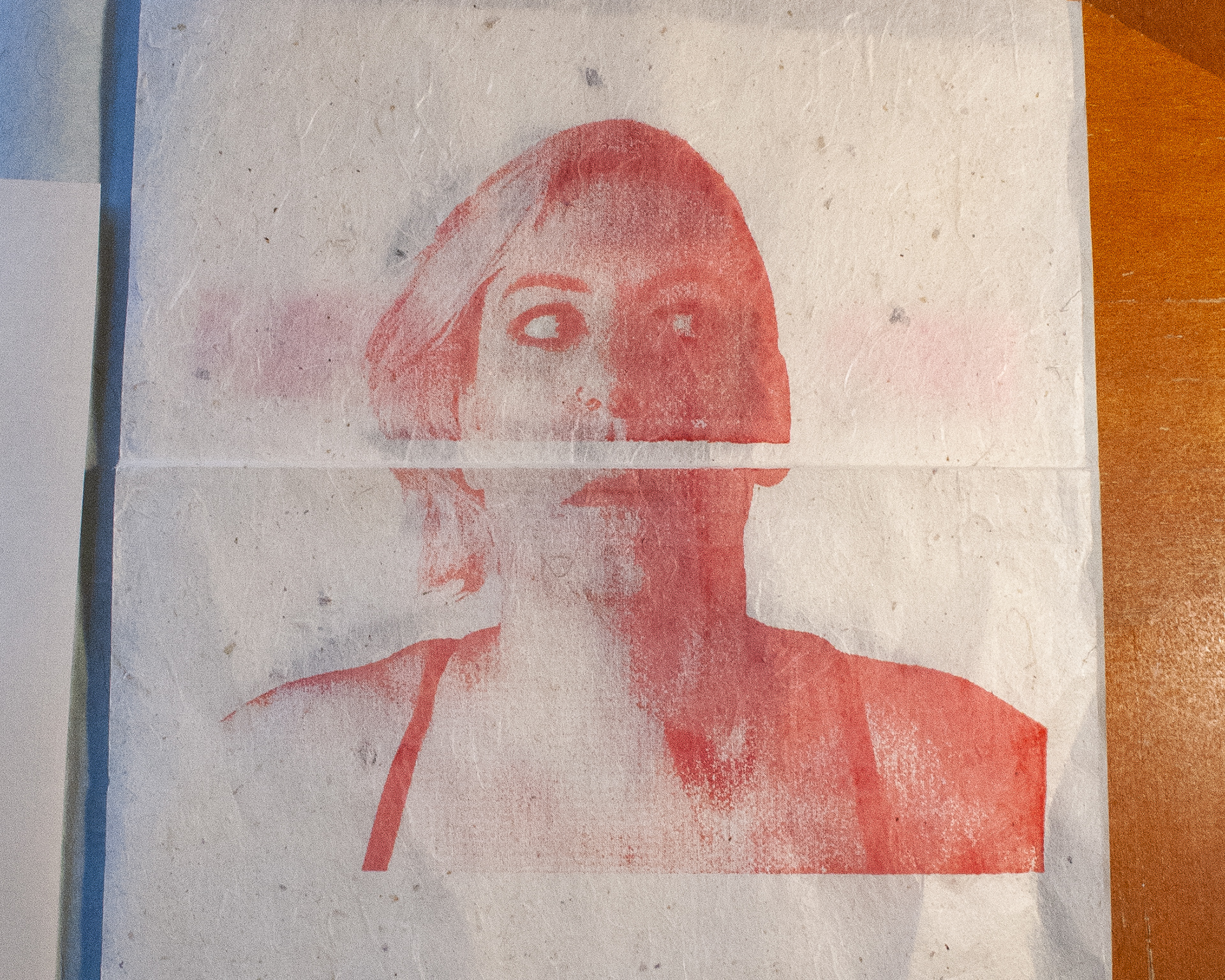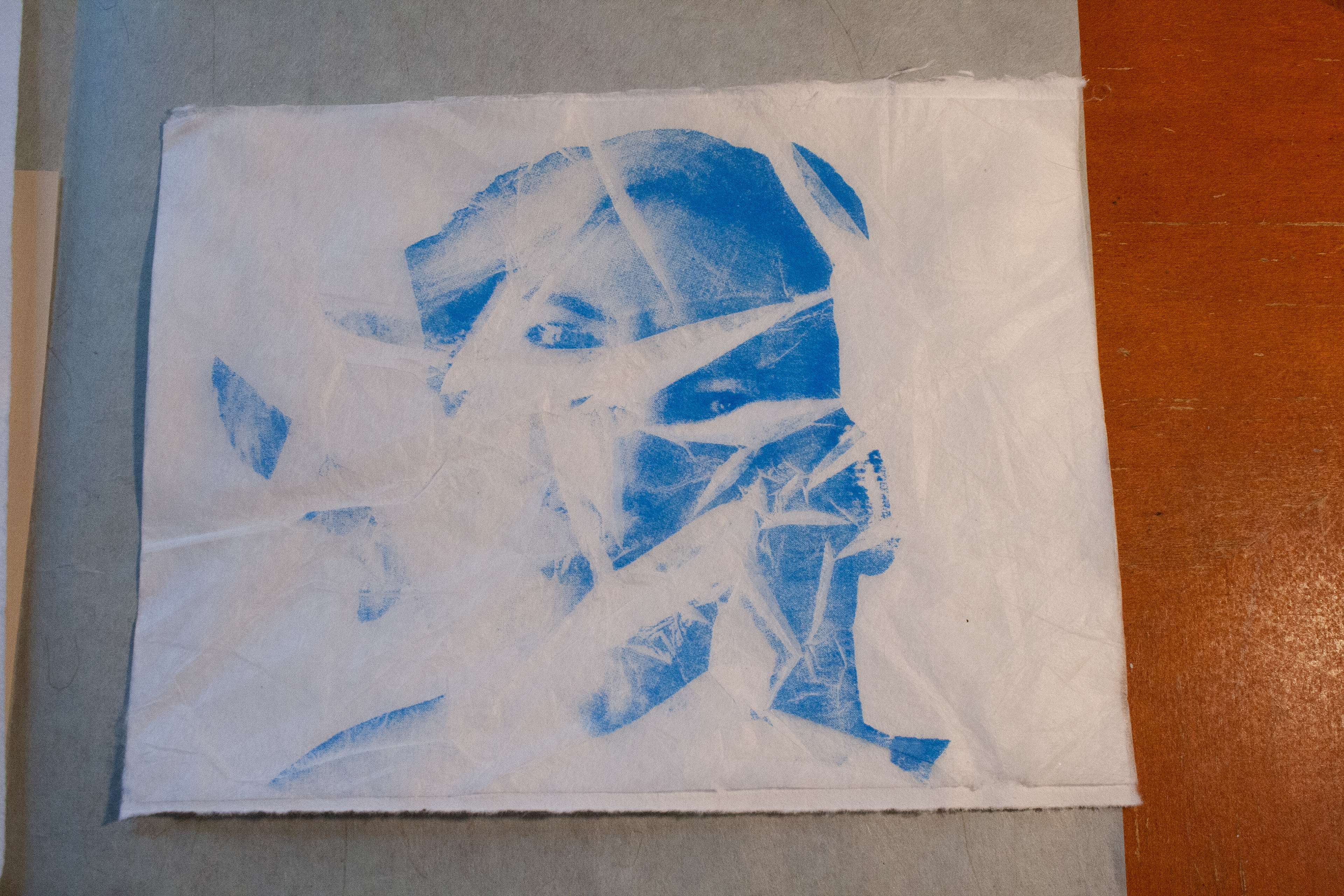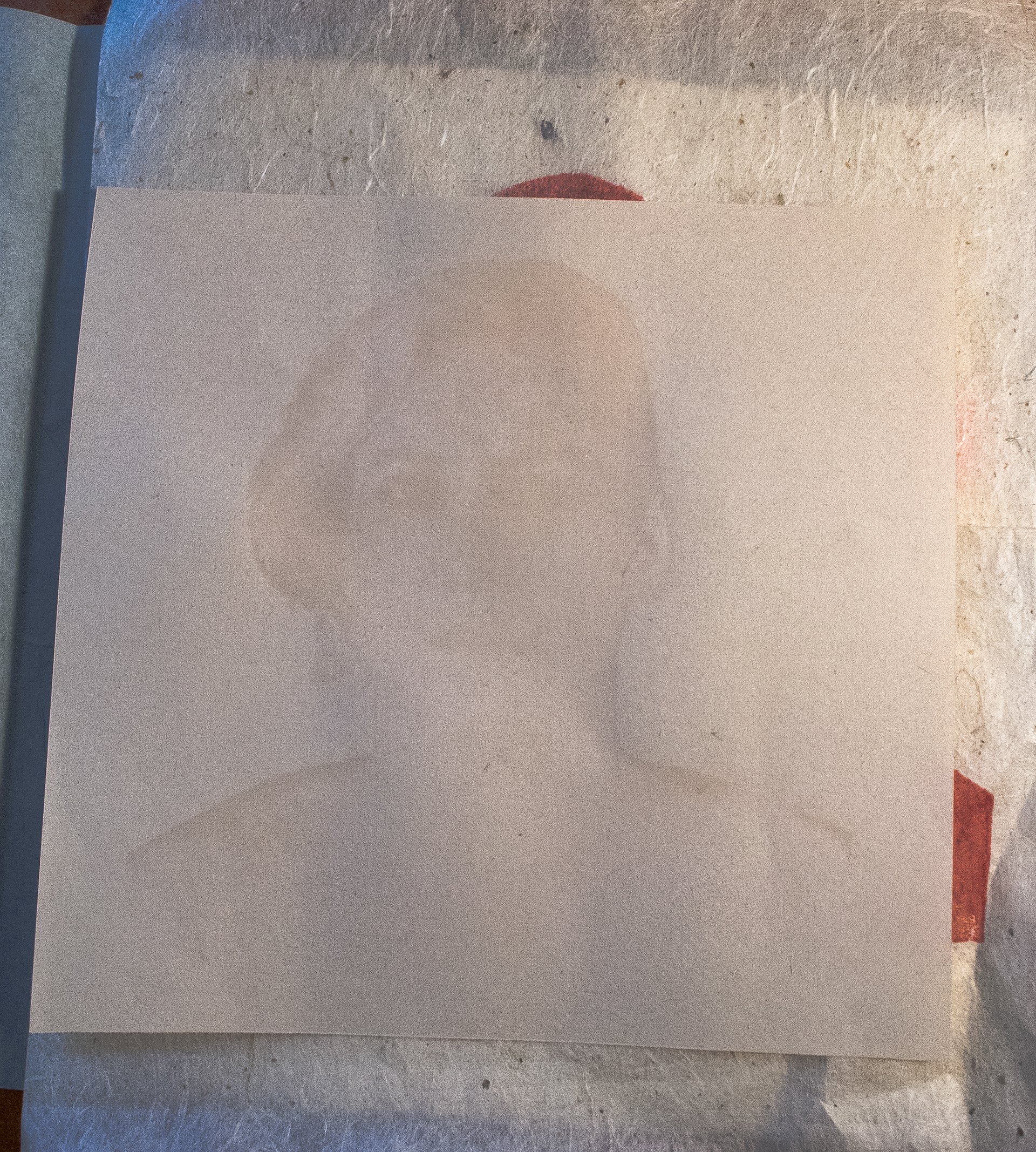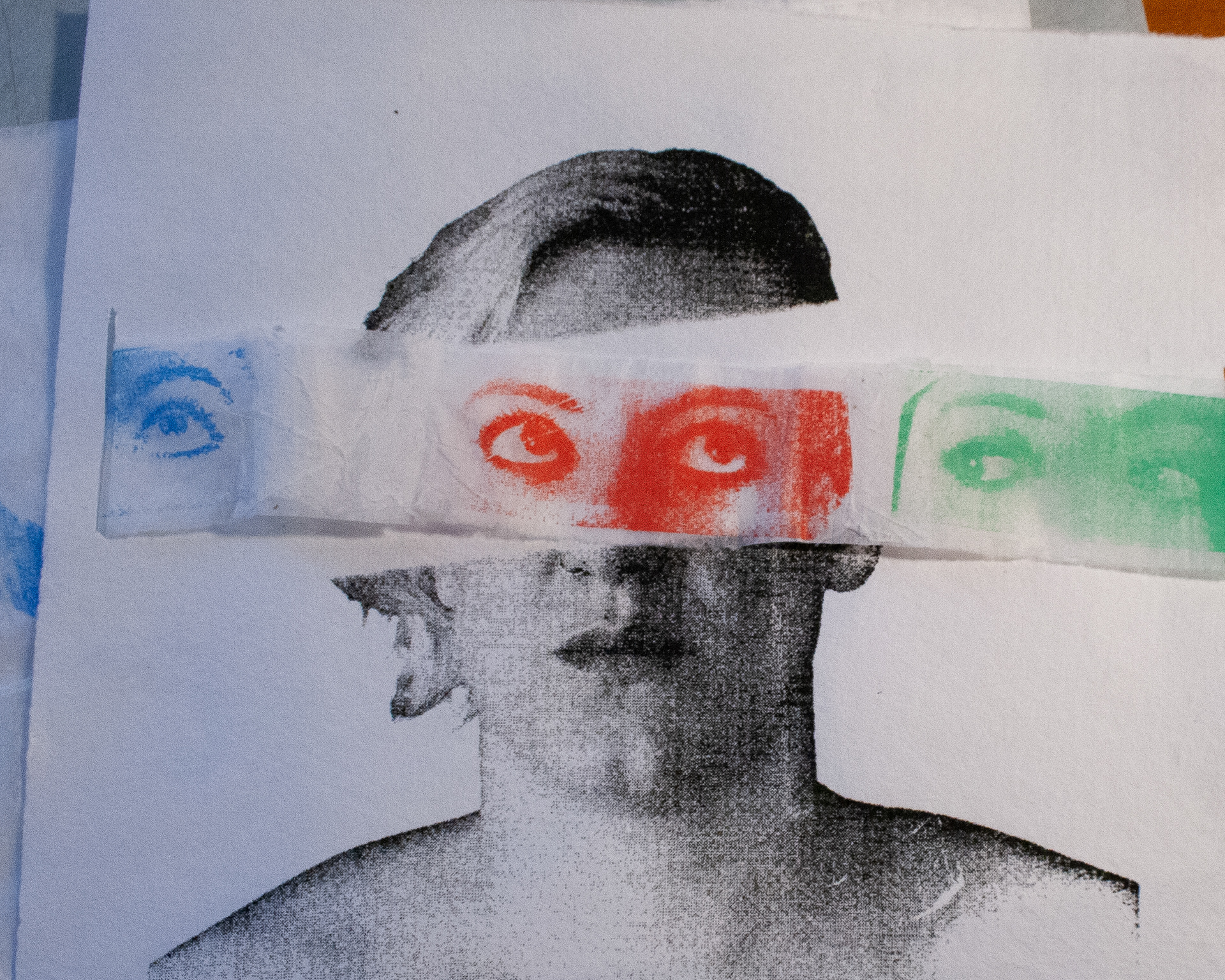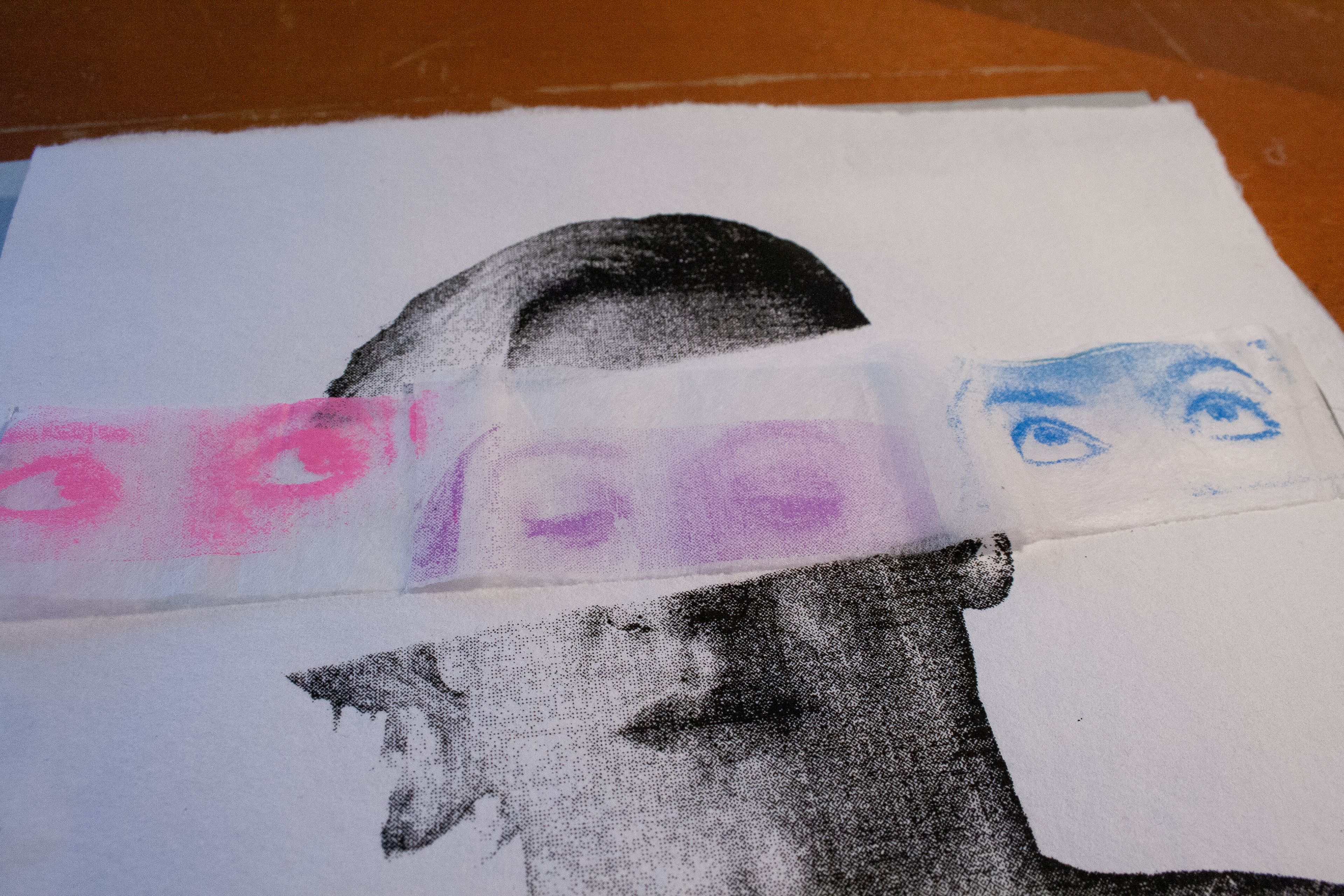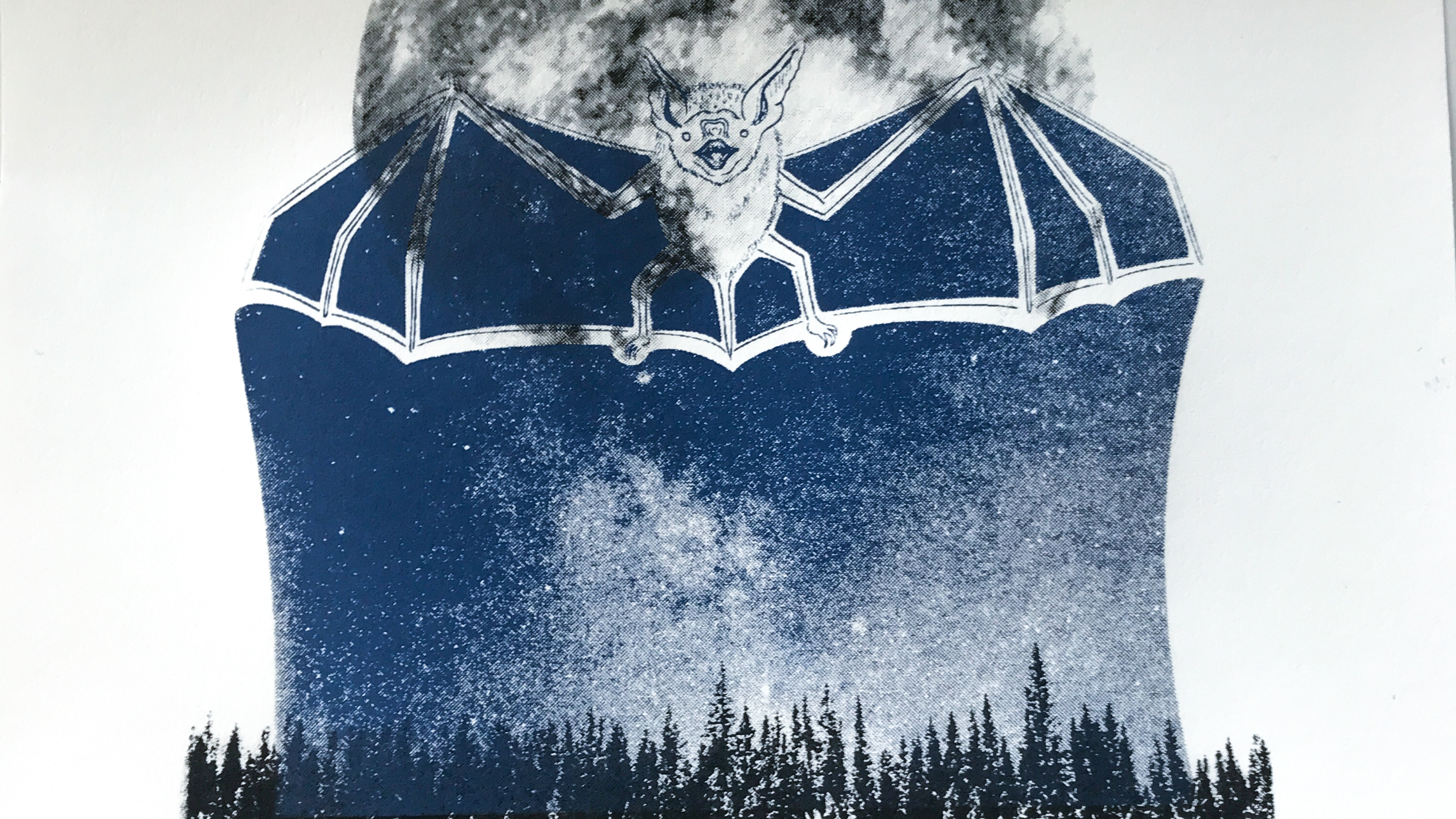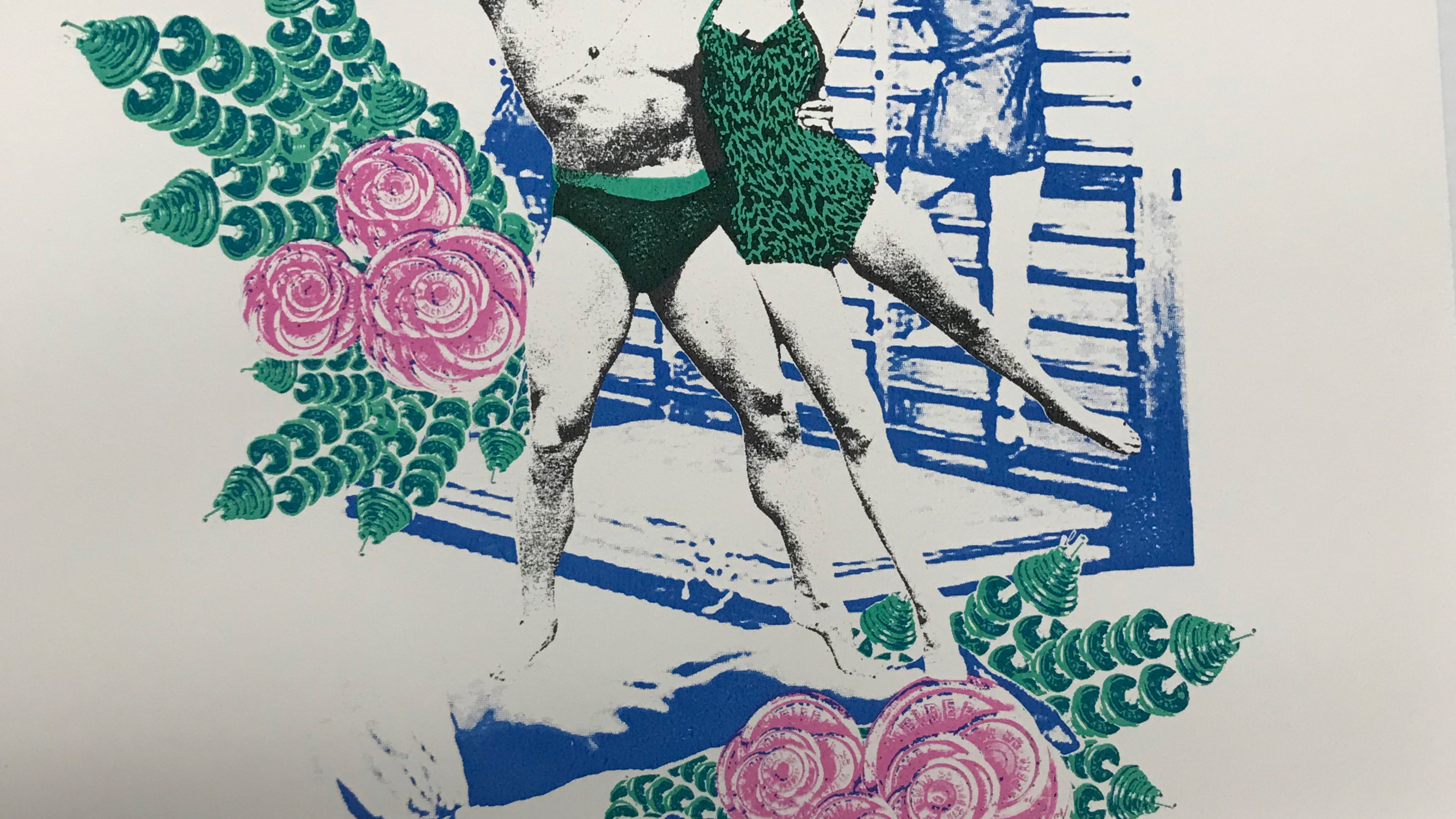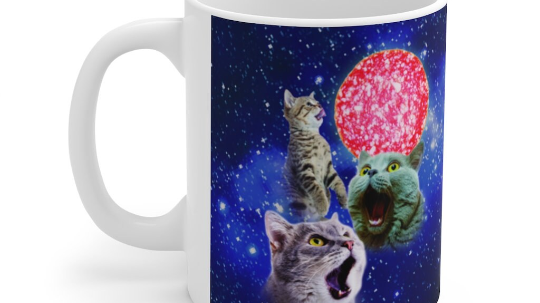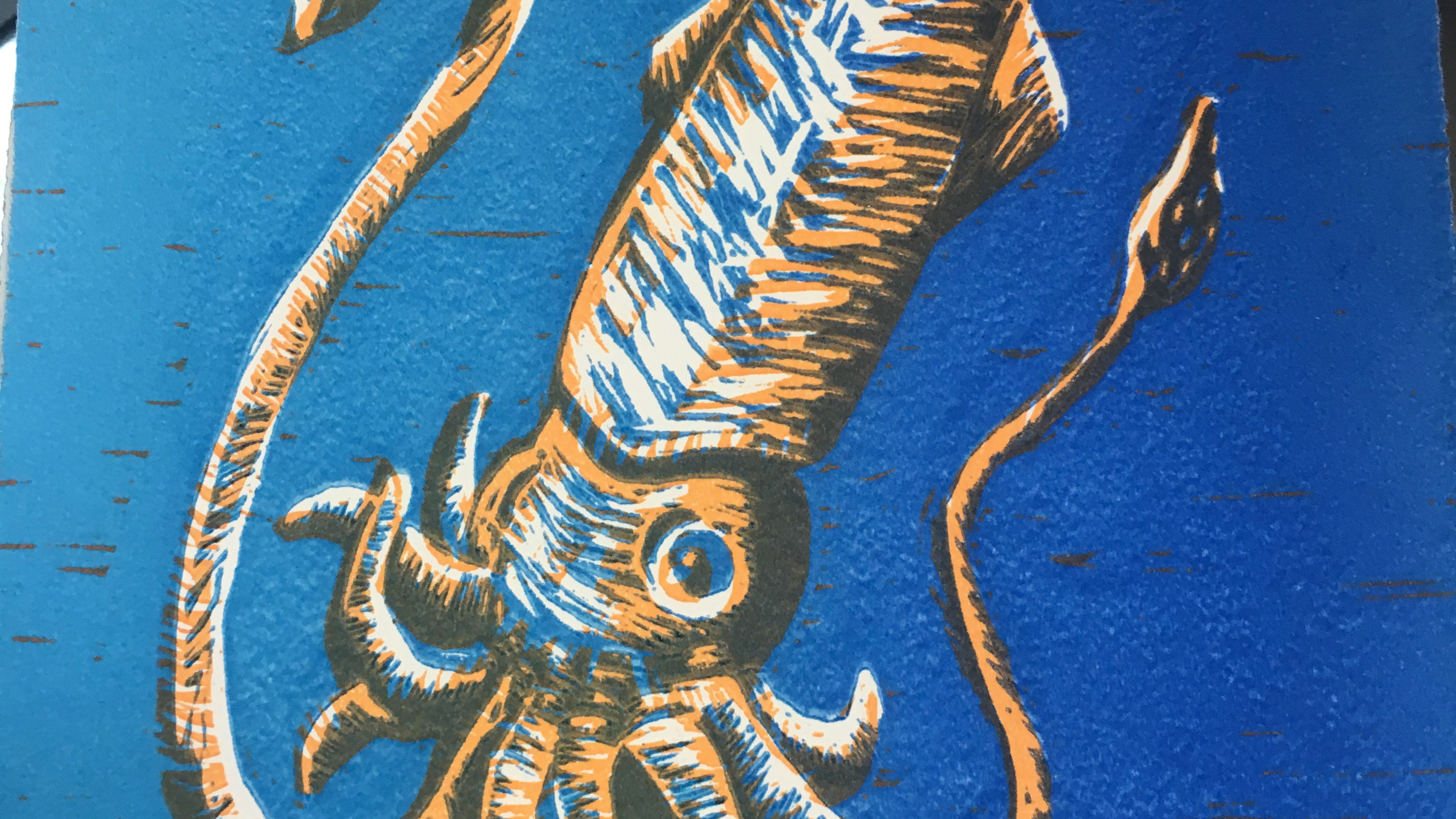In this project I wanted to explore how the first year and a half of the pandemic affected my mental state.
Between the overall stress of the pandemic as a drawn out emergency, the isolation of living alone in lockdown, the loss of structure, and the shrinking of my world to just my apartment, like many others I’ve been experiencing impacts on my focus, my energy, and my overall mental capacity. I titled this work “I think this year my self dissolved” because through the process of making it I’ve been attempting to visualize how I’ve been feeling: the sense of being unable to gather my entire brain together at once, as if parts of my self are constantly floating away, fading away, flickering in and out of existence.
I began by photographing a series of self-portraits that I would later manipulate through printing. I edited one of these digitally to erase the features of my face, but I left the rest as they were in order to alter manually. Although I did a few digital tests of concept, I avoided too much pre-planning or mocking up of the final prints—I have a tendency to make rigid plans in advance, and I wanted to force myself to work more fluidly and experiment more throughout the physical production.
The work is a single loose-bound book of complementary prints. It is meant to be interacted with, taken apart, and closely examined. The book is held together by an outer band of off-white paper bound with a single stitch, printed in white with the title of the work. Inside that is an outer folder, simply printed with the faceless portrait that I edited digitally. The folder contains four other prints selected from my experiments. The first is simply a print of one of the portraits in varnish on smooth off-white paper—it is only visible when light Is reflecting at the right angle, and usually isn’t all visible at once. The next is a print in orange on a handmade paper—the paper is folded in the centre, so the face splits apart as the page is moved. The third print is in black and white on cardstock, with a strip blocked off where the eyes should be. A series of eyes from different portraits are printed in bright colours on thin tissue and fastened together in a loop around the portrait that can be rotated to place different sets of eyes in the face. The fourth is a nearly disintegrated face, the result of folding and scrunching up a piece of tissue before printing on it. The tissue is fastened on a piece of white cardstock in order to stabilize it and provide contrast behind the ink.
Overall I found that I encountered fewer technical challenges in this project than I expected. Printing at home of course meant that I was working with limited space and relatively inconsistent equipment, but it also allowed me to work more fluidly and more experimentally. It probably would have helped to be working with a larger screen just to allow for more space between the elements and to make it easier to block them off though! I would say that the biggest challenge I faced was the same state of mind that I was exploring through the work. I encountered numerous creative blocks, was more prone to frustration when something didn’t work, and had to abandon my first attempt at printing in-studio when I found myself immobilized by uncertainty. Discussing the project with classmates in the in-progress critique was extremely helpful, and reminded me how helpful it is to share ideas with others in the development process, and as I mentioned, the ability to work in small burst at home was also extremely helpful in overcoming the mental blocks I faced. Overall, I’m very satisfied with this work. Although it was difficult and not every concept I tried worked out, I was able to explore a lot of different techniques that I hadn’t expected at the start. I would like to continue playing with the concepts in the work and this type of process in the future.
